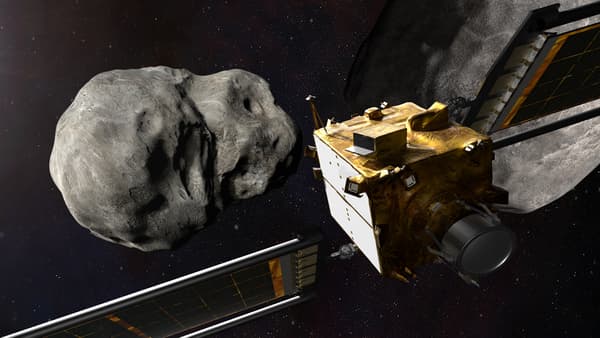Stunning images. A “cloud of rocks” was observed in space after a NASA spacecraft crashed into an asteroid as part of a scientific experiment carried out in 2022, the US agency announced Thursday, based on new photographs taken by the NASA. Hubble Space Telescope.
The DART spacecraft deliberately crashed into the Dimorphos asteroid in September 2022, about 11 million kilometers from Earth, to study the possibility of diverting a celestial body in danger of impacting the blue planet from its trajectory.

The DART impact altered the Dimorphos run, as expected. But the Hubble images show that the collision also released 37 rocks into the cosmos that range in size from one to more than seven meters across.
Rocks advancing at low speed
These rocks represent about 2% of all those that have been identified on the asteroid’s surface. Dimorphos, measuring 160 meters in diameter, looks more like an amalgamation of large rocks held together by their mutual gravity than a solid mass.
Rocks scattered from the impact are moving away from the asteroid very slowly, at about 1 km/h, according to a Hubble Space Telescope news release. A slowness that will allow the European Space Agency Hera mission – which must inspect the asteroid in 2026 – to observe the rocks.
“The rock cloud will continue to disperse when Hera arrives,” says David Jewitt, an astronomer at the University of California and first author of a study on the subject recently published in Astrophysical Journal Letters.
A “spectacular” moment
The cloud “looks like a slowly spreading swarm of bees,” adds the scientist, quoted in the Hubble press release. This “spectacular” telescope observation “tells us for the first time what happens when you hit an asteroid and see things coming off it.”
Rock scattering from the impact indicates that DART created a crater about 50 meters wide on the asteroid. Scientists will continue to study the trajectory of the rocks to understand “in which directions they were ejected from the surface.”
Source: BFM TV


